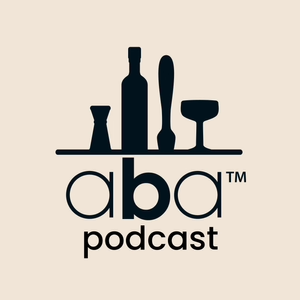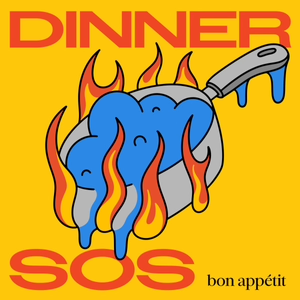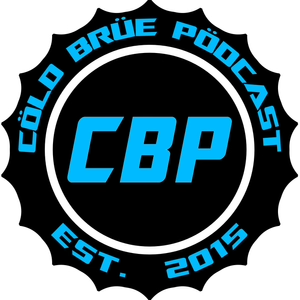
The Daily Taste: Wednesday May 25th, 2022 - Color Extraction in Red Wine
05/25/22 • 3 min
Yesterday we talked about white wine grape pressing because it’s the first step in making most white wines once the grapes arrive from the vineyard. Red wine, as you can imagine has an entirely different process. Since red wine color comes from the grape skins, the grapes need to spend time with the skins to get the color desired for the wine. Typically, red wine grapes arrive at the winery and first go through a destemming process. This is done by a machine called a destemmer which we talked about in an earlier segment. The destemmer gently separates the grapes from the stems and leaves and sends them down a conveyer belt to be sorted. I will post a video to the show website of the destemmer in action. Sorting is important because it allows for stems and leaves that made it through the destemmer to be removed prior to getting into the tank. It’s also a good opportunity to remove any green berries that can impact the finished wine. Some wineries prefer to do their sorting by hand using a team of people to manually sort their grapes. Other wineries use a fabulous machine called an optical sorter. If you want to hear more about the optical sorter, please listen to the Daily Taste Segment from May 6th. I will post a video to the show website with an optical sorter in action if I can find a good one. Once the grapes are sorted, they are pumped into a fermentation vessel which is typically a stainless-steel tank or oak barrel. Of course, there are many other fermentation vessels that are used but these two are the most common for red wine making. The next step in red wine making is to employ a color extraction strategy to make sure the finished wine will have the desired color. The wineries I worked for in the past do pump overs for the first few days before fermentation. A pump over is a gentle extraction method that uses a pump that is hooked up to the bottom of the tank with one hose and another hose is placed over the opening in the top of the tank. The pump then pumps the grapes and juice out of the bottom of the tank and back into the tank through the top. This process allows for the grapes, skins, and juice to be mixed and ensure good color extraction. I will post a video of a pump over in process to the show website. I encourage you watch the video. There are few things as beautiful as a pump over. After a few days of pump overs, the wine is ready to be inoculated with yeast for fermentation. During fermentation, the winemaking team will continue to do pump overs once or twice per day to ensure a good mix and continued color extraction.
Tomorrow we will discuss inoculation and fermentation of both white and red wines. Don’t forget that today is National Wine Day here in the US. So do yourself a fav or and pull out a special bottle to celebrate. You deserve it! Don’t forget to go to the show website to see videos and pictures regarding today’s topic, you'll be ha
Follow us on Social Media:
https://www.instagram.com/obsessedwithwine/
https://www.facebook.com/obsessedwithwine
https://twitter.com/obsessedwine
For more wine content go to obsessedwithwine.com
Listen to past episodes of the podcast here:
Listen on Apple Podcasts: https://podcasts.apple.com/podcast/id1610813329https://podcasts.apple.com/podcast/id1610813329
Listen on Spotify:
https://open.spotify.com/show/6GUNTZsivMlyTySnSbDwfT?si=3c1df2968aba4338
Email the show @ [email protected]
#obsessedwithwine #winepodcast #winelovers #winetasting #winetrends #winestories #winerylife #winetime #winenews #wineeducation #wineculture #winemakers #wineindustry #wineinfluencers #podcastannouncement #season2 #newepisodes #uncorked #cheers
Yesterday we talked about white wine grape pressing because it’s the first step in making most white wines once the grapes arrive from the vineyard. Red wine, as you can imagine has an entirely different process. Since red wine color comes from the grape skins, the grapes need to spend time with the skins to get the color desired for the wine. Typically, red wine grapes arrive at the winery and first go through a destemming process. This is done by a machine called a destemmer which we talked about in an earlier segment. The destemmer gently separates the grapes from the stems and leaves and sends them down a conveyer belt to be sorted. I will post a video to the show website of the destemmer in action. Sorting is important because it allows for stems and leaves that made it through the destemmer to be removed prior to getting into the tank. It’s also a good opportunity to remove any green berries that can impact the finished wine. Some wineries prefer to do their sorting by hand using a team of people to manually sort their grapes. Other wineries use a fabulous machine called an optical sorter. If you want to hear more about the optical sorter, please listen to the Daily Taste Segment from May 6th. I will post a video to the show website with an optical sorter in action if I can find a good one. Once the grapes are sorted, they are pumped into a fermentation vessel which is typically a stainless-steel tank or oak barrel. Of course, there are many other fermentation vessels that are used but these two are the most common for red wine making. The next step in red wine making is to employ a color extraction strategy to make sure the finished wine will have the desired color. The wineries I worked for in the past do pump overs for the first few days before fermentation. A pump over is a gentle extraction method that uses a pump that is hooked up to the bottom of the tank with one hose and another hose is placed over the opening in the top of the tank. The pump then pumps the grapes and juice out of the bottom of the tank and back into the tank through the top. This process allows for the grapes, skins, and juice to be mixed and ensure good color extraction. I will post a video of a pump over in process to the show website. I encourage you watch the video. There are few things as beautiful as a pump over. After a few days of pump overs, the wine is ready to be inoculated with yeast for fermentation. During fermentation, the winemaking team will continue to do pump overs once or twice per day to ensure a good mix and continued color extraction.
Tomorrow we will discuss inoculation and fermentation of both white and red wines. Don’t forget that today is National Wine Day here in the US. So do yourself a fav or and pull out a special bottle to celebrate. You deserve it! Don’t forget to go to the show website to see videos and pictures regarding today’s topic, you'll be ha
Follow us on Social Media:
https://www.instagram.com/obsessedwithwine/
https://www.facebook.com/obsessedwithwine
https://twitter.com/obsessedwine
For more wine content go to obsessedwithwine.com
Listen to past episodes of the podcast here:
Listen on Apple Podcasts: https://podcasts.apple.com/podcast/id1610813329https://podcasts.apple.com/podcast/id1610813329
Listen on Spotify:
https://open.spotify.com/show/6GUNTZsivMlyTySnSbDwfT?si=3c1df2968aba4338
Email the show @ [email protected]
#obsessedwithwine #winepodcast #winelovers #winetasting #winetrends #winestories #winerylife #winetime #winenews #wineeducation #wineculture #winemakers #wineindustry #wineinfluencers #podcastannouncement #season2 #newepisodes #uncorked #cheers
Previous Episode

The Daily Taste: Tuesday May 24th 2022 - White Wine Grape Pressing
Once white wine grapes have reached the winery, they are usually pressed right away to extract the juice to prepare for fermentation. The juice is then pumped into the fermentation vessel of choice (usually a stainless-steel tank) This is a pretty awesome experience. The type of press we used for white wines was a pneumatic bladder press. These presses get their name from the balloon like apparatus inside the press that inflates to put pressure on the grapes and help extract the juice. The bladder press is a long steel tube looking machine with two doors on top that slide open and closed. This press has a touch screen panel that allows the winemaking team to control how long they want to press the grapes and with how much force. The winemaker decides on the sweet spot of enough pressure to extract most of the juice but not too much pressure that the stems and seeds get squeezed and release unwanted bitterness to the juice. The first step of pressing is loading the press with grapes from the MACRO bins delivered that morning from the vineyard. For especially thick-skinned grapes, the winemaking team may add dried rice hulls to the macro bins prior to dumping them into the press to help with the extraction. Loading the press takes a skilled forklift driver to pick up the bins full of grapes and dump them into the press. It is important that the grapes get into the press and not all over the ground as grapes on the ground are rarely put into the press to avoid contamination. Once the press is full, the winemaker selects a press cycle and inputs it into the touch screen telling the press how long to press the grapes and how much pressure to use. The press starts by rotating a few times and allowing the pre-pressed juice called the free run to pour into a sump where it is transferred to the fermentation vessel using a special pump. Once the free run has been drained, the press inflates the inner bladder delicately pressing the fruit against the inner walls of the tank, extracting the juice. These pressings are meant to be gentle, so our press cycles were three hours each. During pressing the extracted juice flows into a sump where it is pumped into a tank for fermentation. Free run and pressed juice are not always fermented together as the winemaker may want to do something special with the free run like make a reserve wine. After the press cycle is done, the winemaker looks inside the press to see if he got all of the juice he wanted or if he wants to run another cycle. If there are a lot of uncrushed berries the winemaker will press again so no juice is wasted. Once it has been determined that pressing has completed, the press rotates allowing the stems, seeds, and grape skins to fall into Macro Bins where they are loaded onto a truck and used for composting.
The final step of the process is cleaning the press! This is the worst part of pressing because someone must climb into
Follow us on Social Media:
https://www.instagram.com/obsessedwithwine/
https://www.facebook.com/obsessedwithwine
https://twitter.com/obsessedwine
For more wine content go to obsessedwithwine.com
Listen to past episodes of the podcast here:
Listen on Apple Podcasts: https://podcasts.apple.com/podcast/id1610813329https://podcasts.apple.com/podcast/id1610813329
Listen on Spotify:
https://open.spotify.com/show/6GUNTZsivMlyTySnSbDwfT?si=3c1df2968aba4338
Email the show @ [email protected]
#obsessedwithwine #winepodcast #winelovers #winetasting #winetrends #winestories #winerylife #winetime #winenews #wineeducation #wineculture #winemakers #wineindustry #wineinfluencers #podcastannouncement #season2 #newepisodes #uncorked #cheers
Next Episode

The Daily Taste: Thursday May 26th, 2022 - Wine Fermentation
Yesterday we talked about receiving red wine grapes and color extraction, today we are going to discuss preparing for fermentation.
Must is the name for the combination of skins and juice in a tank or barrel ready to be fermented. To start the fermentation of both red and white wines, the winemaker has two choices. The first choice is to allow the wild yeast cells that are already present on the grapes and in the winery on the equipment to do the fermentation. This is called a native fermentation or spontaneous fermentation. Native fermentations can add dynamic flavor to wines but are unpredictable which some winemakers don’t like. They are unpredictable because winemakers don’t know which strain of yeast are doing the fermenting, there is no guarantee when the fermentation will start, and the native yeast are not guaranteed to finish the ferment in a reasonable amount of time. The second choice for winemakers is inoculating the must with a specific yeast strain that provides a more predictable fermentation. When inoculating a must with yeast, there is a special process called re-hydrating that must be done before the yeast can be added to the tank with the must. If the yeast is added directly to the tank without re-hydration, the change in temperature will shock and kill them. Here are the typical steps of re-hydrating yeast prior to adding them to the must. First you get a bucket and add water at 104 degrees and pour in the dry yeast. At this time, you can also add any yeast food that you want to add and allow the yeast to wake up. Then a small amount of cold juice from the tank is added to the mixture. The yeast starts to ferment the sugar in the inoculation sample as they wake up. The winemaking team then waits 15-20 before measuring the temperature of the inoculation. The goal is to get the inoculation temperature within 15 degrees of the temperature of must in the tank. The wineries I worked in typically started inoculations when the tank must be at 55 degrees, so our yeast mixture must be around 70 degrees for it to be safe to add to the tank. The winemaking team will continue to add juice from the tank every 15 to 20 minutes until the yeast mixture has reached the desired temperature. Then the yeast mixture is poured into the tank with the must and the tank is mixed to ensure an even mixture of yeast and must. I will add some pictures to the show website of the yeast re-hydration so you can see what it looks like.
After the must has been inoculated, the winemaking team keeps track of the progress of fermentation by taking a daily sample from the tank or barrel and testing the BRIX. BRIX is basically the sugar level in the fermenting must. This can be done using a hydrometer or a cool little machine called a DMA. For dry wines, the goal is to get the brix to as close to zero as possible. The fermentation for red wines can be complete in just a few days w
Follow us on Social Media:
https://www.instagram.com/obsessedwithwine/
https://www.facebook.com/obsessedwithwine
https://twitter.com/obsessedwine
For more wine content go to obsessedwithwine.com
Listen to past episodes of the podcast here:
Listen on Apple Podcasts: https://podcasts.apple.com/podcast/id1610813329https://podcasts.apple.com/podcast/id1610813329
Listen on Spotify:
https://open.spotify.com/show/6GUNTZsivMlyTySnSbDwfT?si=3c1df2968aba4338
Email the show @ [email protected]
#obsessedwithwine #winepodcast #winelovers #winetasting #winetrends #winestories #winerylife #winetime #winenews #wineeducation #wineculture #winemakers #wineindustry #wineinfluencers #podcastannouncement #season2 #newepisodes #uncorked #cheers
If you like this episode you’ll love
Episode Comments
Generate a badge
Get a badge for your website that links back to this episode
<a href="https://goodpods.com/podcasts/obsessed-with-wine-podcast-200532/the-daily-taste-wednesday-may-25th-2022-color-extraction-in-red-wine-21088651"> <img src="https://storage.googleapis.com/goodpods-images-bucket/badges/generic-badge-1.svg" alt="listen to the daily taste: wednesday may 25th, 2022 - color extraction in red wine on goodpods" style="width: 225px" /> </a>
Copy




